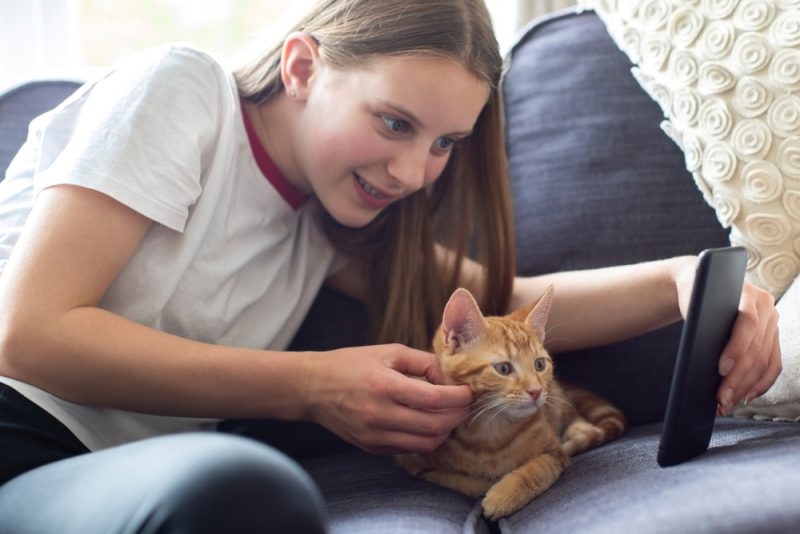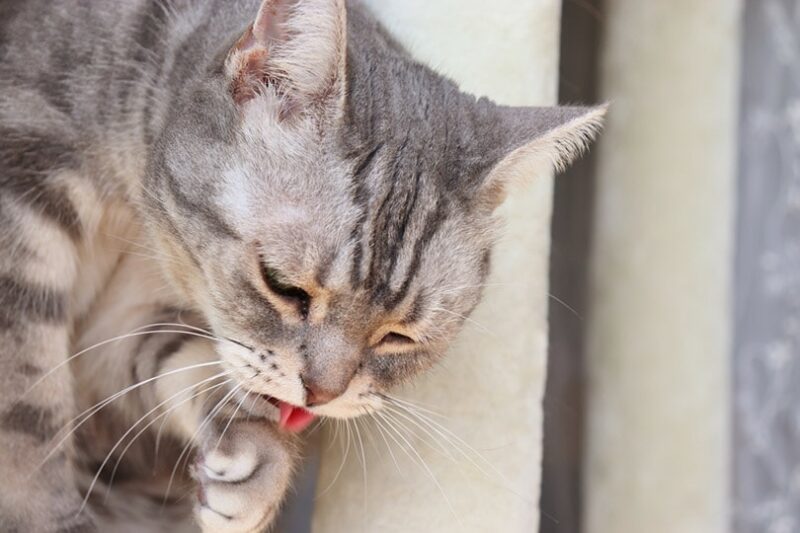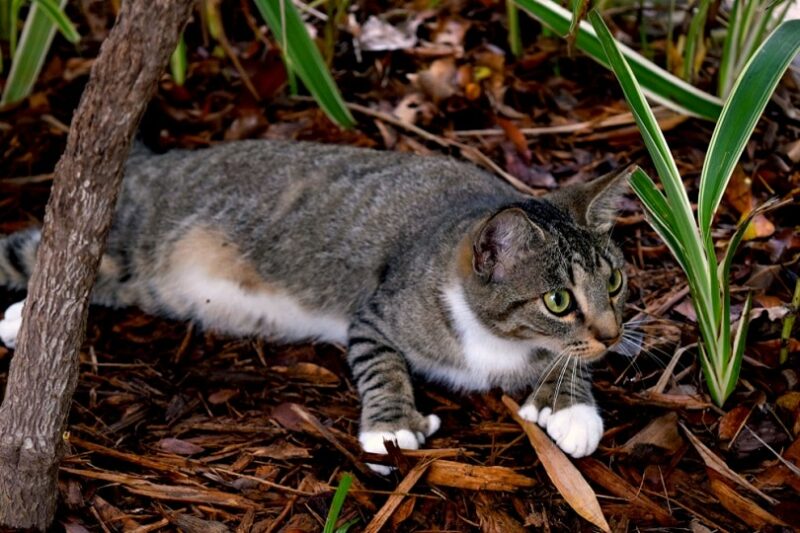How many times have you walked into someone’s home only to quickly realize the cat is the one running the show? If you’re a cat owner struggling with a dominant cat or just trying to ensure that doesn’t happen to you, you’re not alone.
But the good news is that there are a few simple tips and tricks that you can follow to deal with status or territorial dominance from your cat and recover control of your home. You don’t need to make multiple lifestyle changes either. Still, you should understand that unlike dogs, cats do not live in packs nor do they have a hierarchical structure to follow. Felines are territorial creatures that will show aggression if their resources are limited. They can be selectively social and learn to recognize colony vs. non-colony members1. Cats might even resort to status-induced aggression in an attempt to establish their social status or resource or territorial dominance2.
Unfortunately, the lack of understanding of a cat’s ways and natural behavior can reinforce inappropriate behavior to the point that they truly believe that you are in their territory and that they can essentially tell you what to do. Fortunately, there are ways to mitigate this issue. Keep reading, and we’ll walk you through everything you need to know.

The 10 Tips to Show Dominance to a Cat
1. Use Positive Reinforcement
When you’re trying to assert dominance over your cat, the last thing you want to do is make it so they’re scared of you. You want to be the respected human of the home, not the warden holding the keys to the prison.
Using positive reinforcement is a great way to show them what is good behavior while building a great bond with them. Reward them when they do good things, and simply ignore the negative behavior. If the behavior is not possible to ignore, work on preventing it by making it physically impossible or unreachable for your cat to achieve. With enough time, the positive reinforcement will work, and you’ll have a cat that respects you and your role as the special human in their life.

2. Teach Them Tricks
The more time you can spend with your cat, the more opportunities you have to assert yourself as the human whom they get to share the territory with. One great way to spend a little extra time with your cat—while improving your relationship and teaching them that this territory is also yours—is to try to teach them tricks.
Persistence is key when teaching a cat anything, and your cat needs to learn that by cooperating with you, they will have a positive outcome. Remember to only reinforce your cat when they are calm and to prioritize staying positive during all the training sessions. If you need a break, there’s nothing wrong with walking away—just try to plan ahead and prevent recurrent timeouts. Plan for short and positive sessions, and do not forget that the real goal is not a single behavior, but rather your long-term relationship and changing how your cat perceives you.
3. Use a Leash
We know, we know—leashes are for dogs. But if you’re trying to get your cat to trust you, this is a great tool. Don’t use the leash as a punishment. Instead, use it as a fun training opportunity. Start by training your cat to wear a harness, then progress to the leash.
Leash training can open a whole new world for your cat, as they can get enriched by leaving their territory and exploring the outdoors along with you.
Remember to always pay attention to them when they’re on the leash and ensure you reward them for good behavior. Please don’t use the leash as a punishment, though. We also don’t recommend walking away while your cat is on the leash.
The best cat leashes are sturdy, comfortable to hold, and easy to attach to the harness. Hepper's Cat Harness & Leash Set offers all that and more, which is why we highly recommend it.
- Escape Proof - Cat leashes and harnesses for walking aren't all equally secure. Our double aluminium...
- Superior Comfort - Our cat harnesses are lightweight, made with premium velvet fabric, breathable...
- Free Extra Strength Leash - You don't need to worry about your cat escaping this harness. This cat...
This set includes a lightweight velvet and mesh harness with reinforced stitching, quick-release buckles, and reflective strips, plus a five-foot leash made from sturdy nylon climbing rope. We especially love this leash's rotating clamp and padded neoprene handle.
At Catster, we’ve admired Hepper for many years and decided to take a controlling ownership interest so that we could benefit from the outstanding designs of this cool cat company!4. Set Boundaries
You can’t let your cat walk all over you and your home. If there are certain things you don’t want your cat to do in your home, don’t let them do it. This doesn’t mean you get to be mean to them if they’re not listening, but it does mean you need to take the necessary steps to prevent the behavior from occurring. For instance, if you do not want your cat on the bed but they keep climbing on it, simply close the bedroom door. This is your home, so set the boundaries you want and need. Just remember that wherever the rule is, consistency is crucial; otherwise, your cat will never understand what is expected from them.
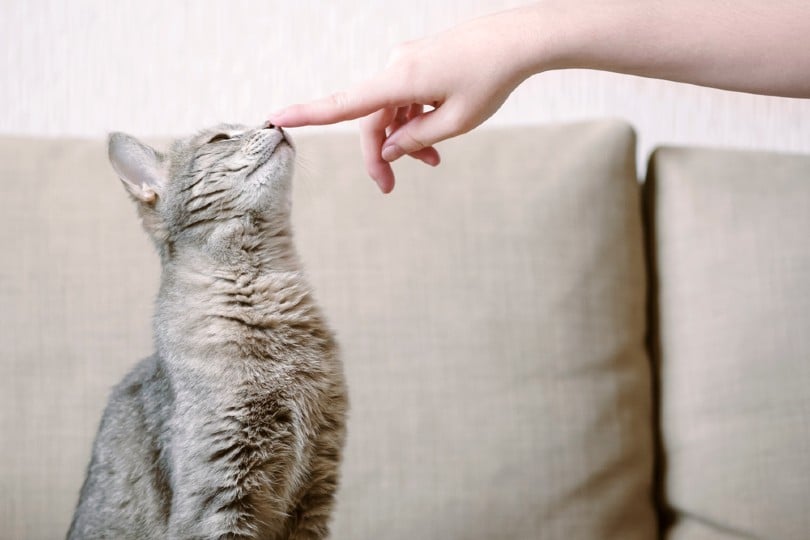
5. Use Catnip
If there’s one thing almost every cat loves, it’s catnip. If your cat reacts to it, you can use it to your advantage. When they’re doing something you like, give them some as a reinforcer. Since most cats are attracted to catnip, you can use it to keep them in certain areas, such as in their cat tree or by their scratcher. The more positive their experiences are there, the more likely they will return.
6. Always Initiate Playtime
When your cat comes up to you, meowing, nudging, and nibbling on you to get you to play with them, try to ignore them. We know that this is easier said than done, but you need to be the one who initiates playtime with them.
This teaches your cat that you’re the one who gets to decide when you’re playing with them, not the other way around. Once your cat is comfortable in their role, this doesn’t mean you can’t occasionally play with them when they ask, but they need to learn to take no for an answer first! In the cat world, regular play can easily escalate to play-related aggression, especially if a cat has extra energy to burn. So, the best way to prevent this is to ensure that you start playtime, thus enabling your cat to burn out all that extra energy so they do not escalate to aggressive tendencies. It’s best that you are in control, have the right mindset, and guide the play session mindfully.

7. Control Where Your Cat Goes
Just because it’s in your home doesn’t mean your cat should have complete access to it. Whether it’s a countertop, a TV stand, or even a specific room in your house, it’s perfectly acceptable to have “no-go” zones for your cat.
The key is to enforce these no-go zones consistently so your cat doesn’t try to trample over the rules. Once they understand what areas are only part of your territory, you shouldn’t have problems keeping your cat away. Similarly, make sure you also respect your cat’s space whenever they are hanging out in their bed, tree, scratcher, or whatever else is considered their territory.
8. Ignore Them
Your cat wants your attention, so if they’re doing something they shouldn’t, don’t give them your attention in the first place! This can be a tough tip to follow since sometimes your cat will purposely act out to try to get you to pay attention to them.
Fight the temptation and keep going on with your day. When your cat learns that acting out doesn’t get them the attention they want, they’ll have to look for new ways to get it. For this method to work, you need to pay attention to your cat when they’re doing something you want them to do or otherwise behaving like you wish.
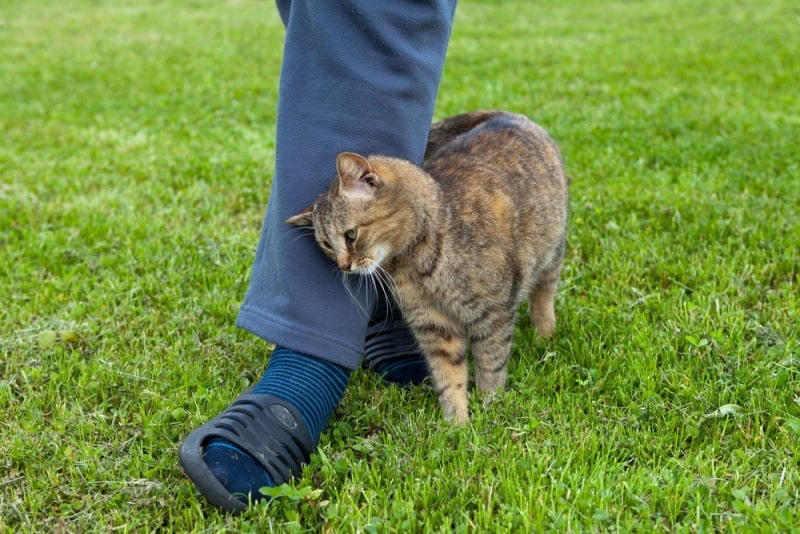
9. Don’t Play Favorites
If you have multiple cats or pets in your home, it’s important that you treat them all equally and don’t play favorites. If you do, they can pick up on that behavior, and that’ll start to set territorial- or resource-induced aggression among them.
Once they develop their own boundaries and territories, it’s natural for them to remain at peace and accept each other—as long as there are enough resources.
10. Don’t Give In!
If you’re trying to< assert your position and establish accepted behaviors in the house, you can’t let the cat feel that they can dominate you or set the rules. At some point, it’s going to feel like a battle of wills, and you need to hold strong to ensure you win. Remember that you hold all the cards, so there’s no reason to let your cat walk all over you in your home. Set your boundaries, stay consistent, and stay at it!


Final Thoughts
When you’re trying to assert dominance over your cat, it can be a frustrating experience. But if you follow all the tips and tricks we highlighted here, it won’t be long before your cat recognizes you as the leader of the home.
Don’t expect them to ever be as submissive as a dog, but they shouldn’t challenge you for your top spot either!
Featured Image Credit By: Karpova, Shutterstock





